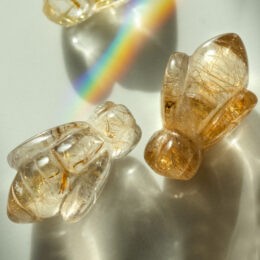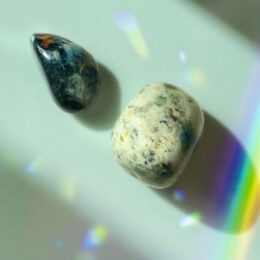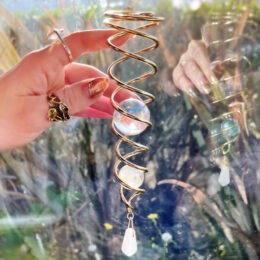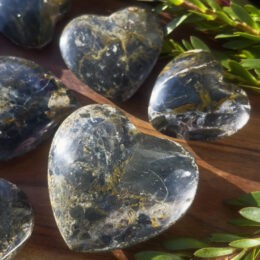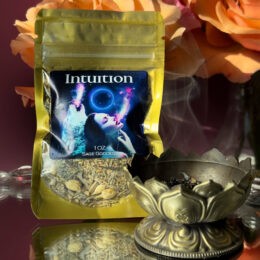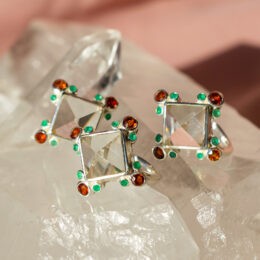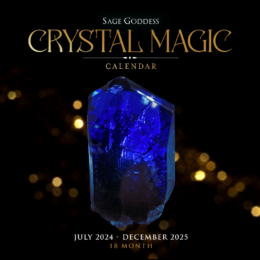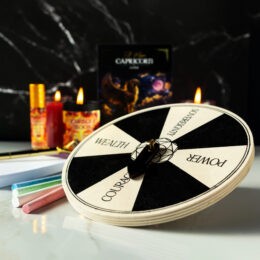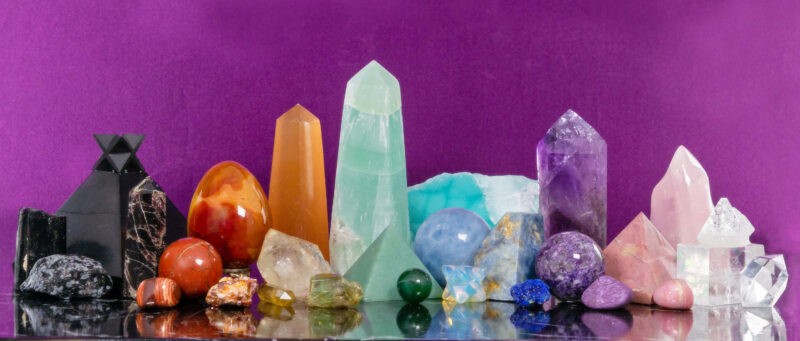Lepidocrocite Guide: Properties and Meaning

Lepidocrocite Properties
Color: Pink, purpleMohs Hardness: 2.5-3.5Chakra: CrownCrystal Structure:MonoclinicLocation: Global
About Lepidocrocite
Lepidocrocite is a powerful crystal associated with the Crown chakra, known for its stunning pink and purple hues. It brings calmness and soothing energy to the mind, body, and spirit. This crystal is renowned for its effectiveness in healing trauma and PTSD, as well as relieving energetic stress. Lepidocrocite acts as a protective barrier against negative energy in the aura field, making it an excellent choice for individuals sensitive to such energies. It also assists with ADHD, hyperactivity, and the unraveling of karmic tensions. Furthermore, Lepidocrocite has the capacity to heal the inner child. Often sold in combination with other stones like amethyst or quartz, Lepidocrocite is a popular choice for those seeking a versatile and potent healing crystal.
The history of Lepidocrocite
The history of Lepidocrocite is deeply rooted in its metaphysical properties and its association with the Crown chakra. While specific historical records may be limited, the crystal has been revered for centuries for its healing abilities. Ancient civilizations recognized its beauty and believed in its ability to bring balance and harmony to the mind, body, and spirit. Lepidocrocite’s use in healing trauma and PTSD can be traced back to ancient healing practices, where it was utilized to alleviate emotional and energetic imbalances. Over time, its reputation as a powerful crystal for protection against negative energies and its capacity to aid in ADHD and hyperactivity became more widely known. Today, Lepidocrocite continues to be cherished for its rich history and its ability to bring profound healing and transformation to those who seek its energy.
What are the healing properties of Lepidocrocite?
Lepidocrocite calms and soothes the mind, body, and spirit. It has beautiful pink and purple hues. This stone is a master healer and effectively heals trauma and PTSD. It relieves energetic stress and acts as a barrier against negative energy in the aura field. Lepidocrocite is an excellent choice for those sensitive to negative energies. It also helps with ADHD and hyperactivity, unravels karmic tensions, and heals the inner child. Lepidocrocite is often sold in combination with other stones such as amethyst or quartz, making it a popular choice for versatile healing.
Lepidocrocite FAQ
What is Lepidocrocite used for?
Lepidocrocite is used for its healing properties and is often used in crystal healing practices. It has a calming and soothing effect on the mind and body. Lepidocrocite is also used in jewelry making, as it is a beautiful gemstone with a unique reddish-brown color.
What does Lepidocrocite do?
Lepidocrocite has various metaphysical properties. It enhances intuition and psychic abilities, making it a popular choice for those seeking spiritual growth. Lepidocrocite promotes emotional healing and balance, helping individuals release negative emotions and find inner peace.
Can Lepidocrocite go in water?
Lepidocrocite is generally safe to be placed in water. However, it is always recommended to check with a gemstone expert or do thorough research before submerging any gemstone in water, as some gemstones may be sensitive to water or other liquids.
How to cleanse Lepidocrocite?
To cleanse Lepidocrocite, you can use various methods such as smudging with sage or palo santo, placing it under running water, or burying it in the earth for a period of time. It is important to choose a cleansing method that resonates with you and your beliefs.
What does Lepidocrocite do spiritually?
Lepidocrocite has powerful spiritual properties. It enhances spiritual growth, intuition, and psychic abilities. Lepidocrocite also connects one with higher realms and facilitates communication with spirit guides or angels.
How to clean Lepidocrocite?
To clean Lepidocrocite, you can gently wipe it with a soft cloth or use a mild soap and water solution. Avoid using harsh chemicals or abrasive materials that may damage the gemstone. After cleaning, make sure to dry it thoroughly before storing or wearing.
How to spot fake Lepidocrocite?
To spot fake Lepidocrocite, it is important to familiarize yourself with the characteristics of the genuine gemstone. Look for the unique reddish-brown color and the distinctive patterns or inclusions that are often present in Lepidocrocite. Additionally, consult with a reputable gemstone expert or jeweler for further guidance.
Is Lepidocrocite toxic?
Lepidocrocite is generally considered non-toxic and safe to handle. However, it is always recommended to wash your hands after handling any gemstone or mineral, as some individuals may have sensitivities or allergies.
Where is Lepidocrocite found?
Lepidocrocite is found in various locations around the world, including Brazil, Madagascar, Russia, and the United States. It is often found as an inclusion within other minerals or gemstones.
How is Lepidocrocite pronounced?
Lepidocrocite is pronounced as “lep-i-doh-kroh-sahyt.” The emphasis is on the second syllable, “do.”
What chakra is associated with Lepidocrocite?
Lepidocrocite is commonly associated with the Root Chakra, which is located at the base of the spine. It helps ground and stabilize one’s energy, promoting a sense of security and stability.
Can Lepidocrocite be in the sun?
Lepidocrocite can be safely exposed to sunlight. In fact, some believe that sunlight can help energize and recharge the gemstone. However, prolonged exposure to direct sunlight may cause the color of Lepidocrocite to fade over time.
How to charge Lepidocrocite?
To charge Lepidocrocite, you can place it in direct sunlight or moonlight for a few hours. You can also bury it in the earth or use other charging methods that resonate with you and your spiritual practices.
What is the hardness of Lepidocrocite?
Lepidocrocite has a hardness of around 5 to 5.5 on the Mohs scale, which means it is relatively soft compared to other gemstones. It is important to handle Lepidocrocite with care to avoid scratching or damaging the gemstone.



